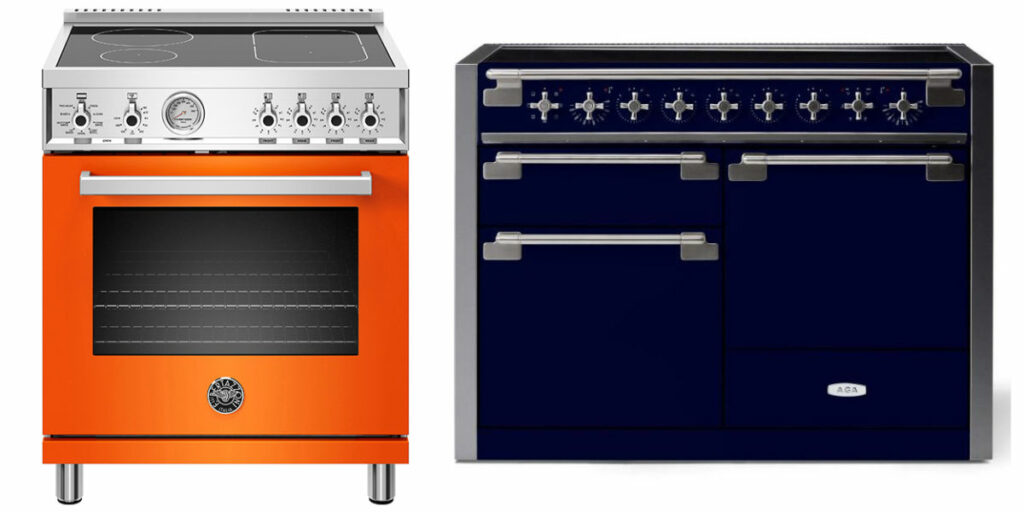Full disclosure, I own an induction stove, and I’m a convert, so I am biased in a way. I’m also a huge cook, and absolutely love cooking on induction.
Induction stoves seem to be a popular topic in the news, with people really divided which way they stand, and many cooks really defending their love of cooking with gas.
I honestly think a lot of the worry people have with induction comes from the natural human aversion to change. But if you think about it, the way we cook has changed dramatically over the years. From open hearths to wood or coal stoves to electric and gas ranges, each option has had its pros and cons (mainly cons, let’s be real). However, in recent years, induction cooking has emerged as one of the most efficient, safe, and environmentally friendly methods of cooking. Is Induction the way of the future?
What is Induction Anyway?
Induction cooking is a type of electric cooking that uses magnetic fields to heat pots and pans directly, instead of heating an element under the pan, which in turn heats the pan. An induction stove is equipped with an induction coil, which generates an alternating magnetic field when an electrical current passes through it. When a magnetic-based pot or pan is placed on the stove, the magnetic field induces an electrical current in the pot or pan, which in turn generates heat. This heat is then transferred to the food in the pot or pan, cooking it.
Will my Pots & Pans Work with Induction?
Take a magnet off your fridge and stick it to the bottom of your pot or pan. Does it stick or fall off? If it sticks well, your pan should work fine with induction. Cast iron (including enameled cast iron), stainless steel and carbon steel work fine. Aluminum, glass and copper do not.
Advantages of Induction Cooking over Gas
- Speed: Induction cooking is significantly faster than gas cooking because it heats the pot or pan directly, rather than relying on heat from a flame or a heating element. This means that you can get your food to the table faster, saving you time and energy in the kitchen. A higher end induction stove is shockingly fast. My grandma used to always say “A watched pot never boils”, but she never got to experience induction.
- Energy Efficiency: Induction is more energy-efficient than gas because it only heats the pot or pan, and not the surrounding air. This results in less heat waste and more efficient use of energy. In fact, induction cooking can be up to 90% energy-efficient, compared to 40% for gas ranges. It also keeps the kitchen heat down which can help in the middle of summer.
- Safety: Induction cooking is safer than gas because there is no open flame or hot heating element, reducing the risk of fires or burns. Additionally, induction cooktops turn off automatically if no pot or pan is detected on the surface, preventing accidents and waste of energy. And because there is no heating element under the glass, it’s difficult to accidentally burn yourself on the stove top. I’ve chased my cats off the stove while I’m using it, and seen them walk on live elements, but not even notice because it’s not hot to the touch in the spot where the pan isn’t touching.
- Better Control: Induction cooking provides extremely precise temperature control, allowing you to adjust the heat quickly and easily. This results in more consistent cooking, better temperature control, and the ability to cook delicate dishes without burning them. You can jump from a rapid boil to a light simmer in seconds, without having to remove your pot from the burner. (Great for pasta water which is about to boil over).
- Easier to Clean: Induction cooktops are smooth and flat, making them easy to clean and maintain. Unlike gas stoves, which have grates and crevices that can trap food and grease, induction cooktops can be wiped clean with a damp cloth, making them hygienic and low maintenance. And for those who have cooked on glass electric before, induction surfaces stay much cooler than electric, so you don’t get baked on crud to scrape off. You can really just wipe clean.
Why Induction is Better for the Environment
- Reduced Greenhouse Gas Emissions: The production and use of natural gas, the primary fuel source for gas stoves, results in significant greenhouse gas emissions. Induction electric cooking, on the other hand, can be powered by renewable energy sources such as solar, hydro and wind, reducing the carbon footprint associated with cooking.
- Lower Energy Use: Induction cooking is more energy-efficient than gas cooking, as mentioned earlier, leading to lower energy use and lower carbon emissions.
- No Hazardous Emissions: Gas stoves emit hazardous pollutants such as carbon monoxide and nitrogen oxides, which are harmful to human health and the environment. Induction cooking, on the other hand, produces no hazardous emissions into the home. Indoor air quality is becoming more of a concern for homebuyers as people are becoming aware of how important it is to our health.
Cities and counties around the country are starting to ban gas stoves in new construction. And with the inflation reduction act, you may qualify for a discount on a new induction stove. If you’re thinking about switching, now may be a great time! It really does feel like the way of the future.
Further Reading
- Pros and Cons of Induction Cooktops and Ranges – Consumer Reports
- The Case for Induction Cooking, Versus Gas Stoves – New York Times
- Is Induction the Future of Cooking? – America’s Test Kitchen
- Why cities are banning gas stoves – The Hill
